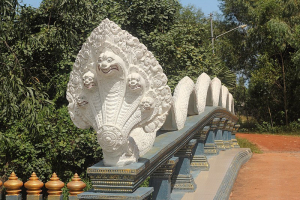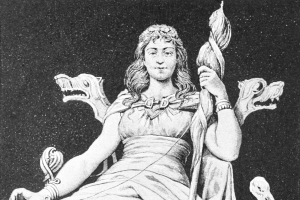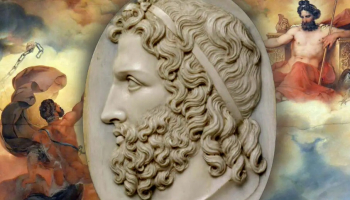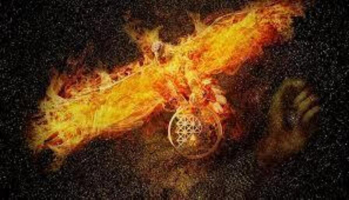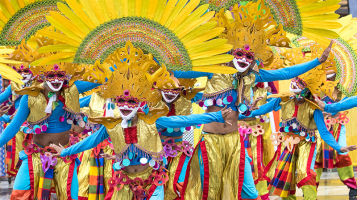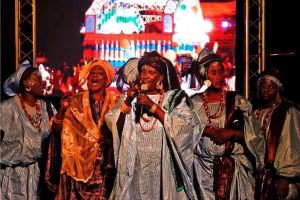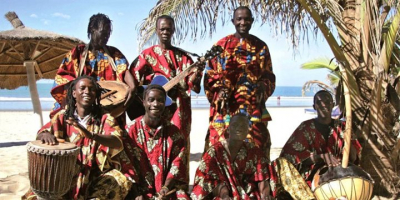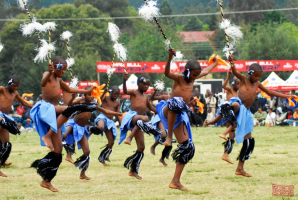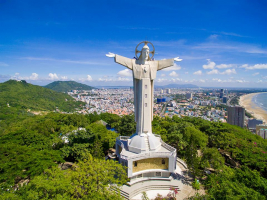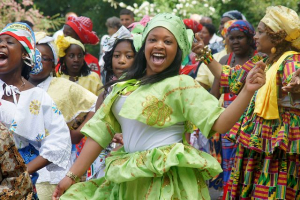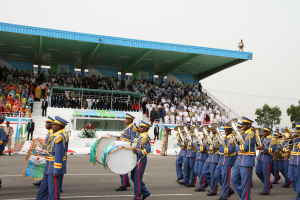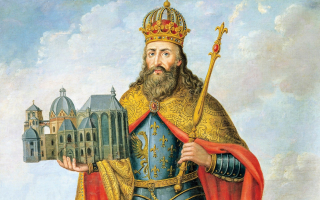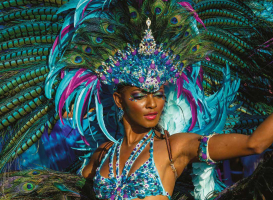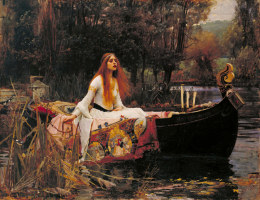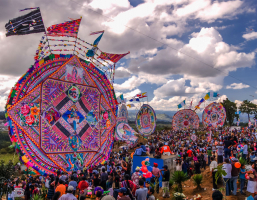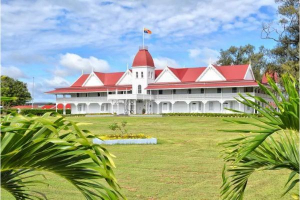Top 10 Most Famous Norse Gods
The origins of Norse mythology and folklore are arguably among the least clear-cut of those of other well-known myths from history. Their main mythology is ... read more...derived from a patchwork of local legends and oral traditions that originated in both early medieval Scandinavia and pre-Christian ancient Germania. There are always powerful Gods in those tales. And here are the most famous Norse gods.
-
A well-known deity in Germanic paganism as well as one of the most famous Norse gods is Thor. He is a hammer-wielding god from Norse mythology who is connected to lightning, thunder, storms, sacred groves and trees, strength, human protection, hallowing, and fertility. The name of the god appears in Old English as unor, Old Frisian as Thuner, Old Saxon as Thunar, and Old High German as Donar in addition to Old Norse órr. All of these names ultimately derive from the Proto-Germanic theonym *Þun(a)raz, which means "Thunder." From the Roman occupation of parts of Germania to the Germanic expansions of the Migration Period to his high popularity during the Viking Age, when, in opposition to the process of the Christianization of Scandinavia, emblems of his hammer, Mjölnir, were worn, Norse pagan personal names containing the name of the god bear witness to his popularity, Thor is a prominently mentioned god throughout the recorded history of the Germanic peoples.
The most powerful gods of all are typically shown as having red hair and a beard. He was able to overtake his father, Odin, in popularity without making any human sacrifices since he always believed in defending regular people and gods against evil. Due to his lack of superior intelligence and wisdom, the peers taunt and mislead him despite his strength and capacity to assist all races. He becomes enraged and irritable as a result, and he lashes out at them with his hammer, Mjolnir. Magni, Modi, and Thrud are the children of Thor and Sif, the fertility goddess. Thursday is a day that he is connected to.
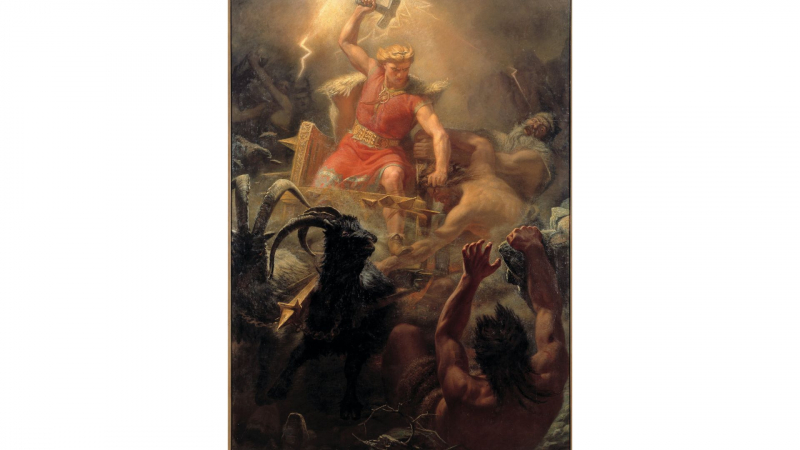
Photo: Wikipedia 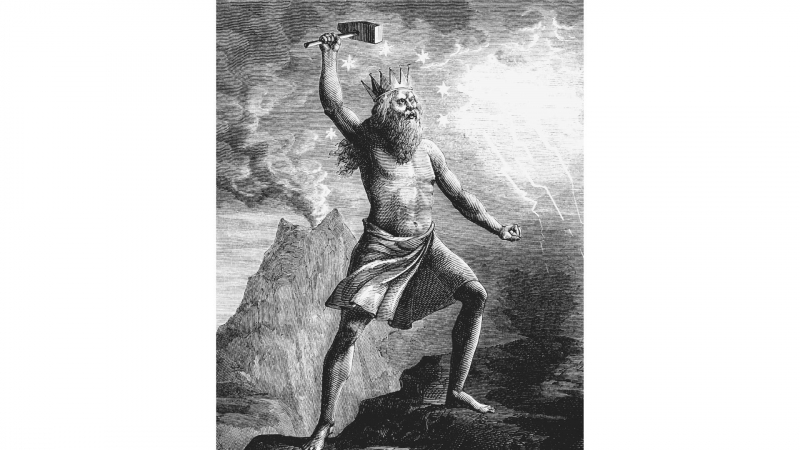
Photo: Britannica -
Loki was considered as the god of Tricks and was also famously known as the Trickster. His actions were mainly cunning and malicious, and being one of the most active and unpredictable gods of all, he also produced a number of circumstances where everyone found themselves in difficult situations and some even lost their lives. He was a handsome god, but his actions did not reflect his wonderful looks. There are numerous instances of his disguising himself and deceiving others. It is believed that he had a significant part in Balder's death, which was carried out by his brother Hod. Loki set off the series of events that resulted in the abolition of numerous gods, including Balder.
When he was eventually imprisoned, he was shackled and had a toxic substance placed above his head in addition to three enormous boulders placed beneath his shoulders, loins, and knees. Every god and goddess, including Loki, are dead at the conclusion of a terrible fight. This marks the conclusion of this mythological era and the beginning of a brand-new cycle of existence.
The Poetic Edda, which Snorri Sturluson collected in the 13th century from older traditional sources, the Prose Edda, Heimskringla, the Norwegian Rune Poems, skaldic poetry, and Scandinavian folklore all make reference to Loki. The Kirkby Stephen Stone, the Gosforth Cross, and the Snaptun Stone all allegedly feature images of Loki. The origins of Loki and his function as a trickster god in Norse mythology have been the subject of scholarly discussion. Modern popular culture references or depicts Loki in a number of different media.
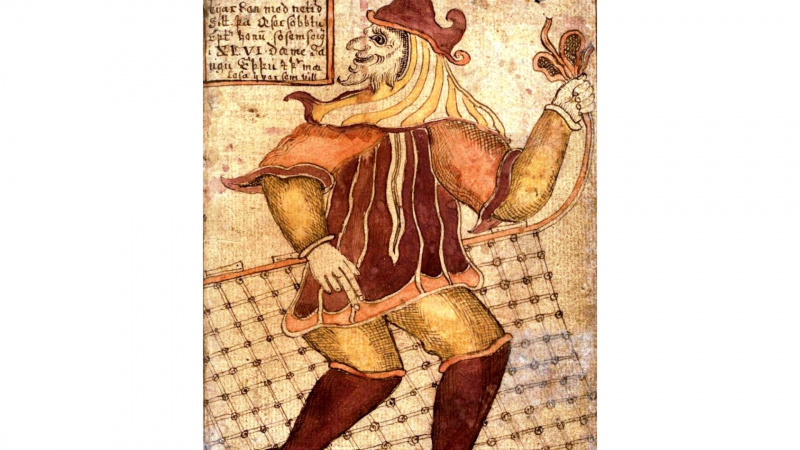
Photo: Wikipedia 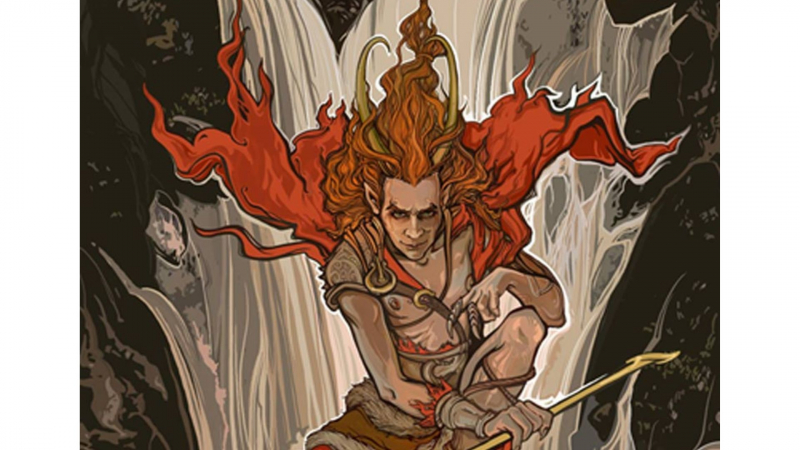
Photo: Ancient Origins -
As the father of Freya and Freyr and a prominent member of the Vanir gods, Njörðr was revered as the God of Wealth, Seafaring, and Fertility. As one of three gods invoked in the 14th-century Hauksbók ring oath and one of the most famous Norse gods, Njörðr is mentioned in the Poetic Edda, which was compiled in the 13th century from earlier traditional sources, the Prose Edda, written in the same century by Snorri Sturluson, Heimskringla, which was also written by the same author, and numerous Scandinavian place names. The veneration of Njörðr continued until Norwegian folklore of the 18th or 19th century, where the god is referred to as Njörðr and thanks for a plentiful catch of fish.
Njörðr and two other people were sent to Asgard as a sign of peace during the conflict between the Aesir and Vanir gods. He was housed in Naotun's dwelling by the sea and was made an honorary member of the Aesir gods. Their marriage did not endure long because Skadi, a giantess, and they both disliked leaving their homes to live in one location together. The cold mountains where Skadi lived were intolerable to Njörðr , and Skadi felt the same way about Njörðr ‘s beachfront home. The Norse people yearned to be as wealthy as Njörðr since he was one of the most prosperous gods of all time.
As a result of his name appearing in so many place names, Njörðr has been the topic of extensive scholarly discussion and thought. These discussions and theories frequently link him to the hero Hadingus and the far earlier documented Germanic goddess Nerthus. Modern anglicizations of Njörr include Njord, Njoerd, and Njorth.
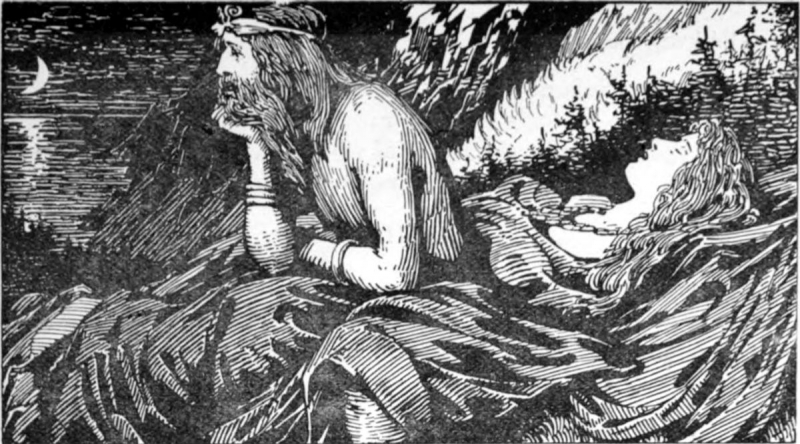
Photo: Wikipedia 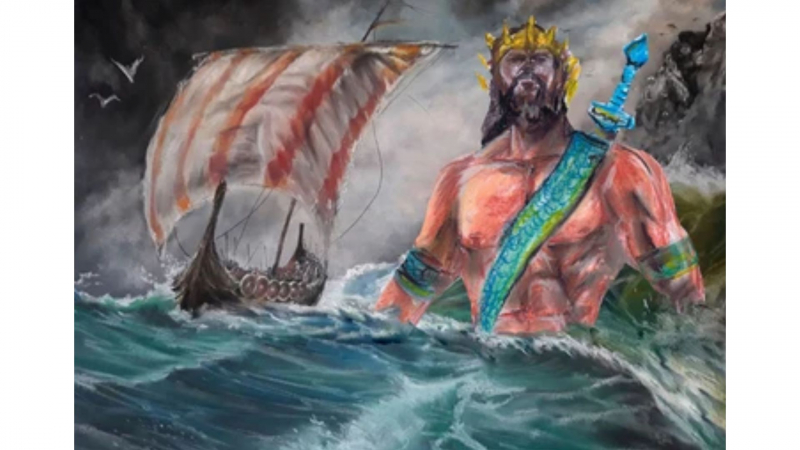
Photo: Shutterstock -
Balder, son of Odin and Frigg, was considered as the God of Light, Purity, Joy, and Summer Sun. He has a number of brothers, including Thor and Váli. Old English and Old High German names for the god in general Germanic mythology, which ultimately derive from the Proto-Germanic theonym *Balðraz ('hero' or 'prince'), include Baeldæġ and Balder. A euhemerized version of his tale was chronicled in Danish records written in the 12th century by Saxo Grammaticus and other Danish Latin chroniclers. The Poetic Edda and the Prose Edda, which were composed in Iceland around the 13th century but were based on earlier Old Norse poetry, make several references to Baldr's death as a great tragedy to the gods and a sign of Ragnarök.
He had a naturally developed physique and was adored by all the gods and goddesses. He was also gracious, happy, and gorgeous. He was regarded as the only god who was adored by everyone and was one of the most knowledgeable, courteous, and fair-spoken gods. His mother, Frigg, had every creature swear not to hurt him after he had a death-related dream. Balder was then safe after they all agreed to the oath, and they all practiced knife throwing on him because he would never be harmed in any way. After learning about the pledge, Loki, the trickster, decided to go to Frigg and inquire about the significance of the oath in order to disguise and kill Balder. Frigg unknowingly informed the masked Loki that Balder may be murdered by a little tree called mistletoe. In the end, Hod, Balder's blind brother, killed him by hurling mistletoe at him; this was Loki's design.
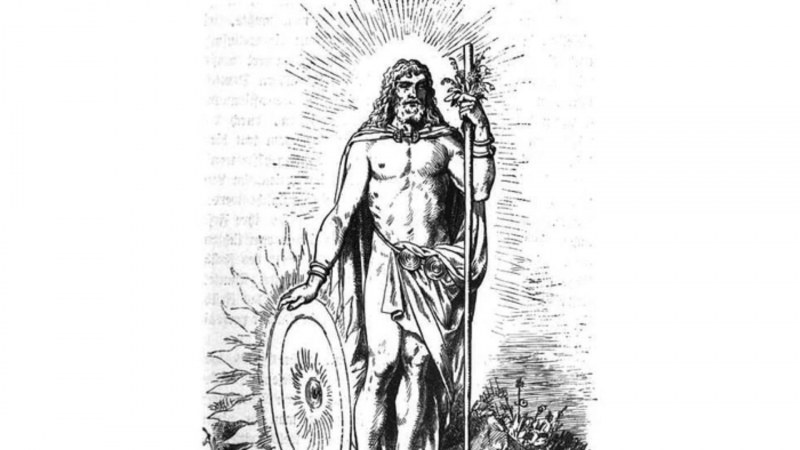
Photo: Myth and Folkfole Wiki 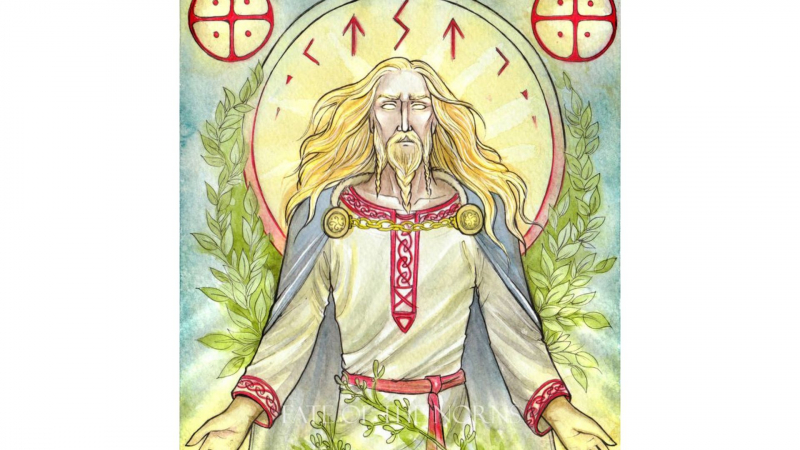
Photo: Pinterest -
The next god in the list of the most famous Norse gods is Odin. The God of Chief Divinity and War was supposed to be Odin, the father of all gods. In Germanic paganism, the god Odin is highly regarded. The majority of the information that has survived about him comes from Norse mythology, which links him to things like wisdom, healing, death, royalty, the hangman, knowledge, war, combat, victory, sorcery, poetry, frenzy, and the runic alphabet. It also shows him as the deity Frigg's husband. The god was also known as Wuodan, Wuodan in Old Dutch, Wuodan in Old Frisian, Wêda in Old High German, and Wuotan in Old High German. These names all derive from the Proto-Germanic theonym *Wanaz, which means "lord of frenzy" or "leader of the possessed."
From the Roman conquest of parts of Germania (from around 2 BCE), to the migration of peoples during the Migration Period (4th to 6th centuries CE), and the Viking Age, Odin is a significant deity throughout the history of Northern Europe (8th to 11th centuries CE). Germanic Europe's rural folklore acknowledged Odin even in modern times. He is mentioned in place names throughout the areas that the ancient Germanic peoples once called home, and Wednesday is named after him in many Germanic languages, including English.
Despite being initially regarded as the God of War and Death, he developed a deep interest in poetry and knowledge, learned a few songs and runes, and eventually transformed into the God of poetry and knowledge. Of all the Norse Gods, he possessed the widest range of traits. Hlidskjalf, the king of Asgard, saw what was happening in the nine worlds while seated on his throne. He was able to control his targets with the help of his effective weapons, the Gungnir (spear), Draupnir (ring), and Sleipnir (steed), and he was able to keep an eye on everything without missing anything with his one eye that shone like the Sun. In Ragnarok, the final resting place of the gods, the wolf Fenrir killed Odin.
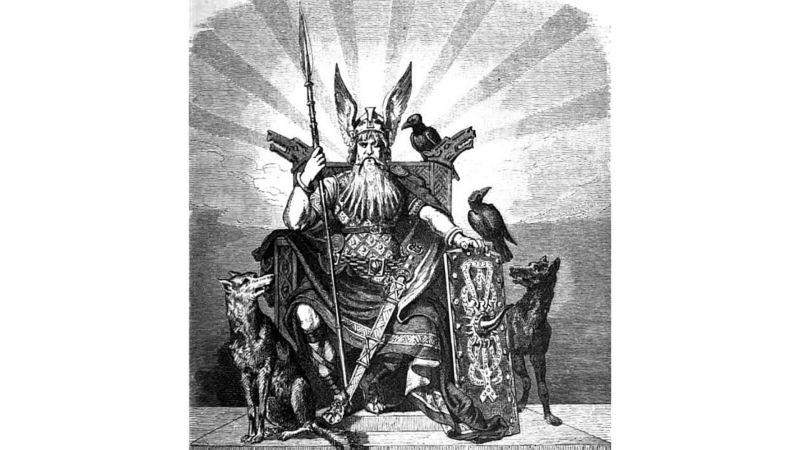
Photo: Simple Wikipedia 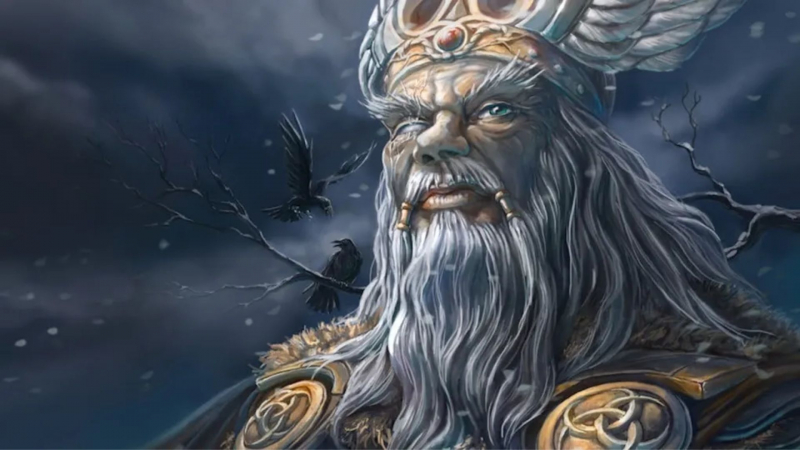
Photo: Viking Sons of Odin -
Viðarr is a god among the gods in Norse mythology who is associated with retribution. According to legend, Viðarr is the son of Odin and the jötunn Gríðr. He is prophesied to kill the wolf Fenrir at Ragnarök to exact revenge for the murder of his father. Viðarr is mentioned in the Prose Edda, which was composed in the 13th century by Snorri Sturluson, and the Poetic Edda, which was assembled in the 13th century from earlier traditional sources. It is believed that Viðarr is pictured beside Fenrir on the Gosforth Cross. The figure is the subject of several ideas, including those involving possible ritual silence and a Proto-Indo-European origin.
His role in Ragnarok is the subject of almost the whole body of writing that is devoted to him in Old Norse literature. The gods fought against the giants, who represented the deities of mayhem and violence, during Ragnarök. Most people on both sides died in the conflict. The god Odin was ingested by the wolf Fenrir. To exact retribution for the death of his father, Vidar, the son of Odin and the giant Grr, immediately attacked the wolf. He was sporting a pair of shoes made specifically for this event. It was the most robust and durable pair of shoes, and it unquestionably possessed magical abilities. Vidar used it to kick the wolf's bottom jaw and tear it apart.
The beast's top jaw remained open as he cut Fenrir's mouth with his blade. He eventually puts an end to the creature's destructive rampage. Other locations also allude to Viðarr as the "quiet deity," albeit no explanation is given for this label. He is reputed to be the most violent god after Thor. His realm is seen to be covered in tall grass and brush. However, it is unclear how this tie between this place and this God is relevant.
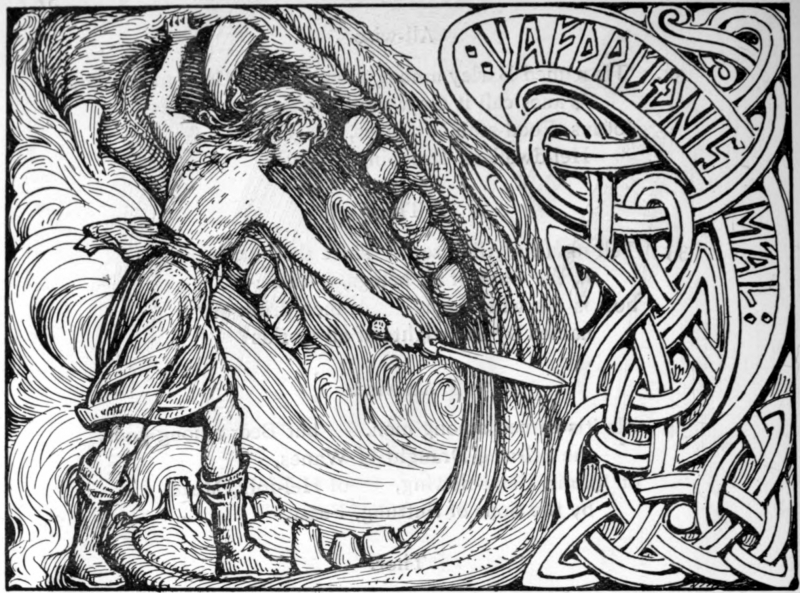
Photo: Wikipedia 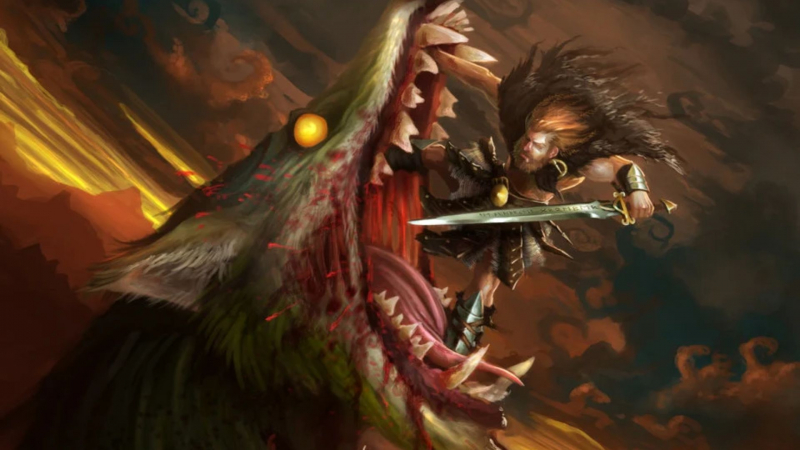
Photo: The Warrior Lodge - Viking Jewery -
Ullr is definitely one of the most famous Norse gods. Ullr is a god related to archery in Norse mythology. Although there are few written references to Ullr, there is evidence, such as relatively old place names from Scandinavia, suggesting he was a significant god in older Germanic paganism. His name is a reflex of the Proto-Germanic notion *wuluz ('glory'), which appears to have been a significant idea. In the Thorsberg chap from the third century, the term is written as owlu-.
Ullr is the son of the grain goddess Sif and the stepson of the thunder deity Thor. Ullr was a skilled archer, hunter, skater, and skier, according to Kennings. He was also a stunning, combative deity to invoke before a fight. “Ullr’s ship” is a kenning for “shield.” This suggests that there once was a tale about him riding a shield across the ocean, but if so, it has since been lost. The Grmnismál, one of the poetic lines in the Poetic Edda, refers to the "Yew Dales" as his home. Yew wood was preferred above all other woods for making bows, which perhaps explains this connection.
The prevalence of place names with "Ullr" in them throughout Sweden and eastern Norway is evidence of Ullr's former prominence among the Scandinavian gods. Numerous of these names have elements like hof, which means "temple," showing that Ullr actively practiced his religion in the early Viking Age and perhaps even afterwards. His name's derivation and origin are uncertain. However, some argue that it might have come from a Germanic root shared by the words glory (in Gothic wulus) and brilliance (in Old English wuldor).
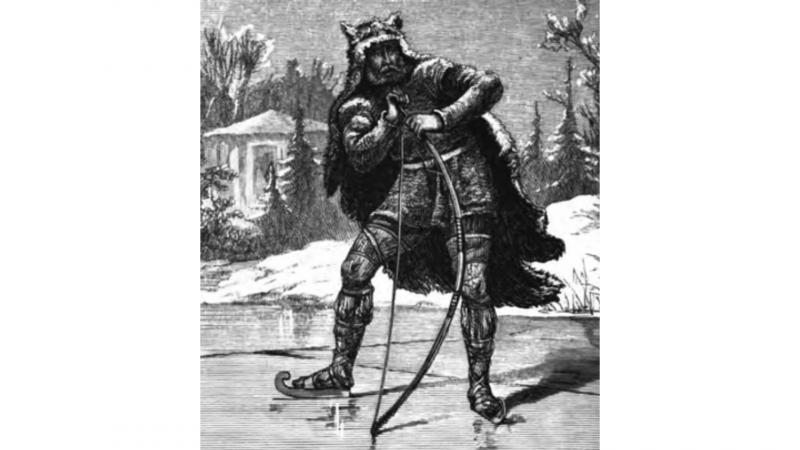
Photo: Myth and Folkfole Wiki 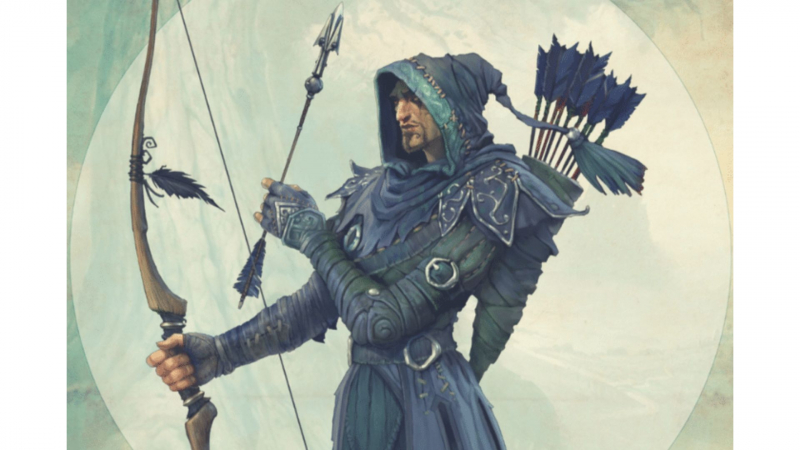
Photo: Mythology Source -
In Germanic mythology, Týr is a deity who protects soldiers and legendary heroes. He is a Norse war god as well as the deity in charge of law and justice. He is a brave and strong male member. Týr gives his hand to the terrifying wolf Fenrir in Norse mythology, which is responsible for most of the remaining tales about gods among the Germanic peoples. Fenrir then chews off Tr's hand after realizing the gods have chained him. In the events of Ragnarök, Týr is prophesied to be devoured by the similarly enormous dog Garmr. He has a modest role in the current Viking Age tales, and it's possible that he had a similar one in the later Viking Age. This wasn't always the case, though. The Norse and other Germanic peoples once considered Tr to be one of their most revered leaders.
In Viking Age and earlier texts, Týr's importance as one of the Norse fighting gods, who are along with Odin and Thor, is amply established. For instance, the valkyrie Sigrdrifa counsels the human hero Sigurd to call upon Týr in order to triumph in battle in the poem Sigrdrfumál, one of the Poetic Edda's poems. This idea is supported by Loki insulting Týr in the Lokasenna, an additional Eddic poetry, by saying that he could only incite conflict but never bring people together.
A few centuries earlier, the Romans connected Týr with Mars, their own main battle god. The modern English word "Tuesday," which comes from the Old English "Day of Tiw (Týr)," maintains this connection (Tiwesdg). This was modeled after the Dies Martis, or "Day of Mars," in Latin. Not to mention, Týr's association with Mars by the Romans reinforces the idea that he was a major deity. But Týr is more than just a god of battle. In actuality, it appears that his main role is to uphold the law and the rule of justice. He is sometimes referred to as Mars Thincsus in the Roman inscriptions that call him "Mars." This suggests that Mars is a member of the Þing, the ancient Germanic legislative body.
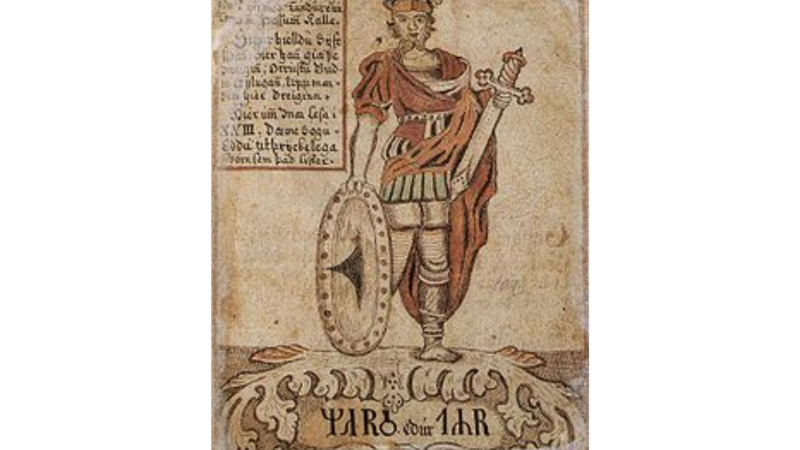
Photo: Wikipedia 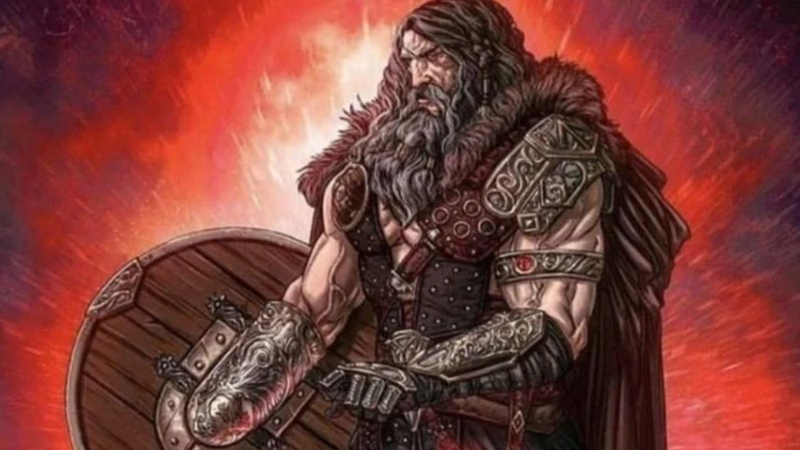
Photo: Vikings Valhalla -
The Moon is personified as Máni in Germanic mythology. Personified Máni is mentioned in the Prose Edda, which Snorri Sturluson wrote in the 13th century, as well as the Poetic Edda, which was assembled in the 13th century from older traditional sources. He is described as the son of Mundilfari and the brother of the personified sun, Sól, in both sources. The Prose Edda adds that he travels through the skies with his two offspring, Hjki and Bil. Máni appears in Old Norse literature as a proper noun. Scholars have put forward suggestions regarding Máni's conceivable relationship to the Northern European idea of the Man in the Moon and a perhaps unrecorded tale of Máni through skaldic kennings.
John Lindow asserts that Máni's death at Ragnarök is necessary for the formation of the Sir. The only person who might have brought this up expressly is Snorri. He speaks about Mánagarm, who will eat a celestial body, possibly the Moon. He gets gorged on by Fenrir, the enormous wolf of Ragnarök. When the Sun and Moon siblings first manifested while the universe was being created, they had no idea what their abilities were in the brand-new universe. Then the gods assembled and made the many hours of the day, the seasons, and the Moon's phases. Then, in the scheme of things, the Gods assigned Sol and Mani their position. They ride horse-drawn chariots through the air. No names are given to the horses that pull Máni's chariot. However, Sol's mounts are Alsvir ("Swift") and Árvakr ("Early Riser"). That's all about the ninth most famous Norse gods we want to mention!
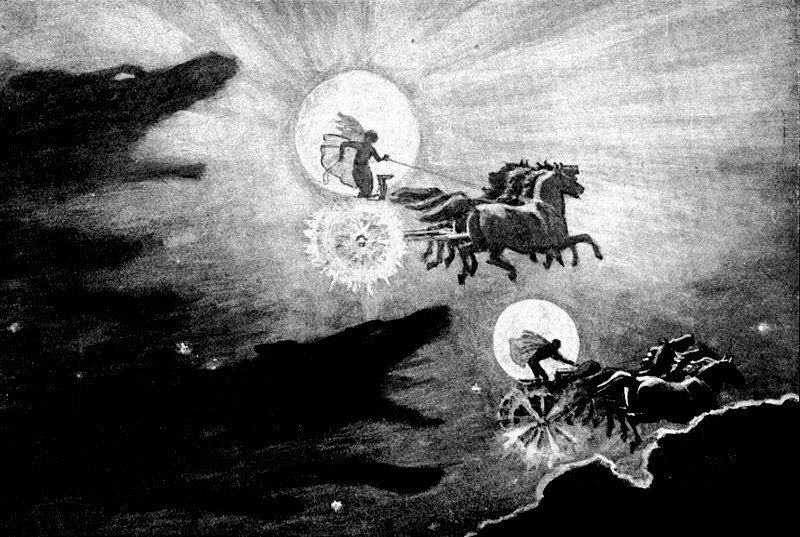
Photo: Amino Apps 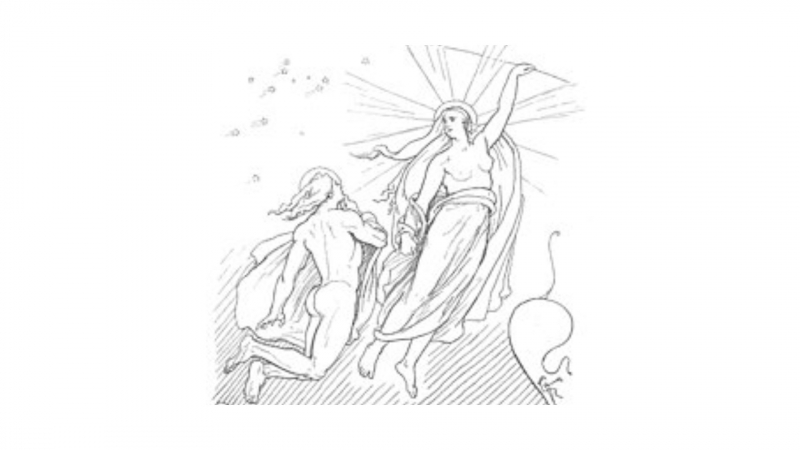
Photo: Wikipedia -
A Norse god named Heimdall keeps an eye out for intruders and the approach of Ragnarök. The burning rainbow bridge Bifröst connects the sky at his home, Himinbjörg. He is claimed to possess clairvoyance and keen senses, particularly hearing and sight. Furthermore, there is some ambiguity in the description of God and his possessions. For instance, Heimdall is known as "the whitest of the gods" and has gold teeth. Additionally, Heimdall is the owner of the golden-maned horse Gulltoppr and the echoing horn Gjallarhorn. As the progeny of the Nine Mothers, he is also attributed with creating social strata in human society.
The Poetic Edda, which was put together in the 13th century from older traditional sources, contains the word Heimdall as a sign of foresight. The Prose Edda and Heimskringla, both written in the 13th century, both make reference to God. Similar to this, Heimdall appears in skaldic poetry as well as an English runic inscription from the Old Norse language. There are still two lines of lost poetry concerning the god Heimdalargaldr. The nature of God has given rise to various opinions among scholars. Due to the cryptic nature of these attestations, these theories include his relationship to sheep, borders, and waves.
Furthermore, it is unknown where the name came from. However, one source contends that "Heimdall" means "the one who brightens the world." In addition, Heimdallr and Mardöll, another of Freyja's names, may be linked. Moreover, Heimdall also has three other names that have been recorded: Hallinskii, Gullintanni, and Vindlér or Vindhlér. Although the name Hallinskii is mysterious, there have been numerous attempts to understand it. Gullintanni means "the one with the golden teeth" in the same way. Similarly, Vindlér (or Vindhlér) means "wind-sea" or "the one who guards from the wind." All three have given rise to numerous ideas about god. Like many other elements of Norse mythology, Heimdall has been referenced in a number of contemporary works.
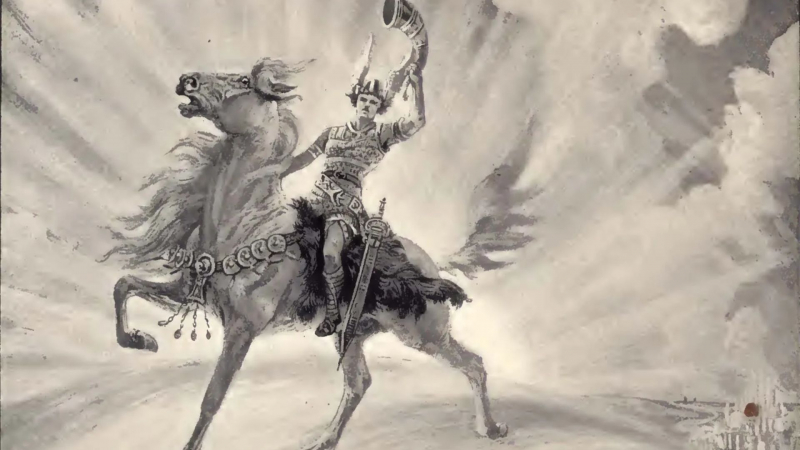
Photo: Britannica 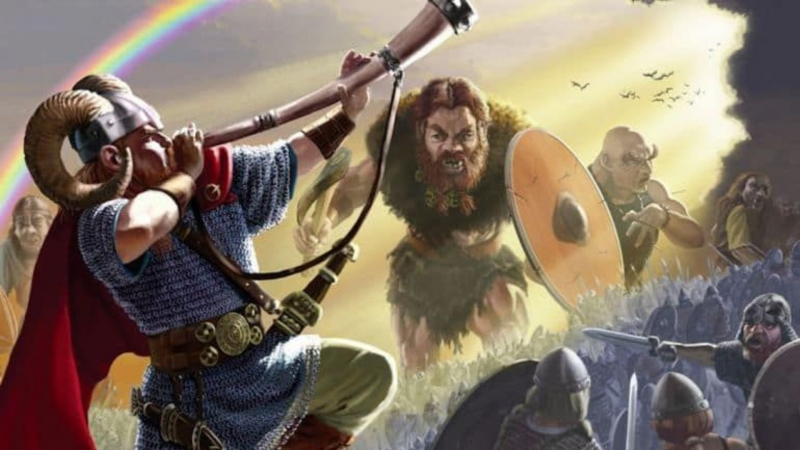
Photo: Pinterest












